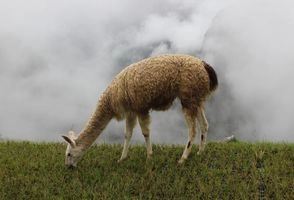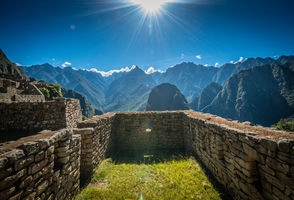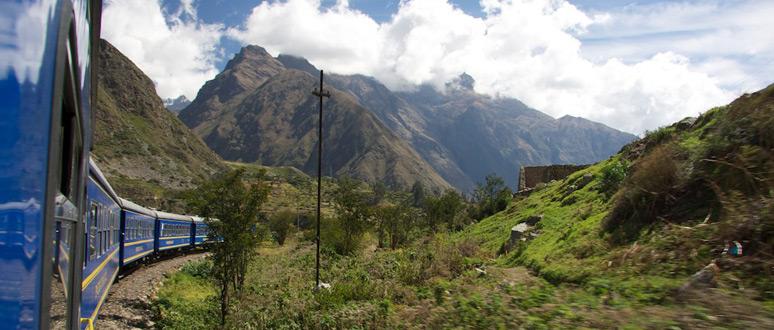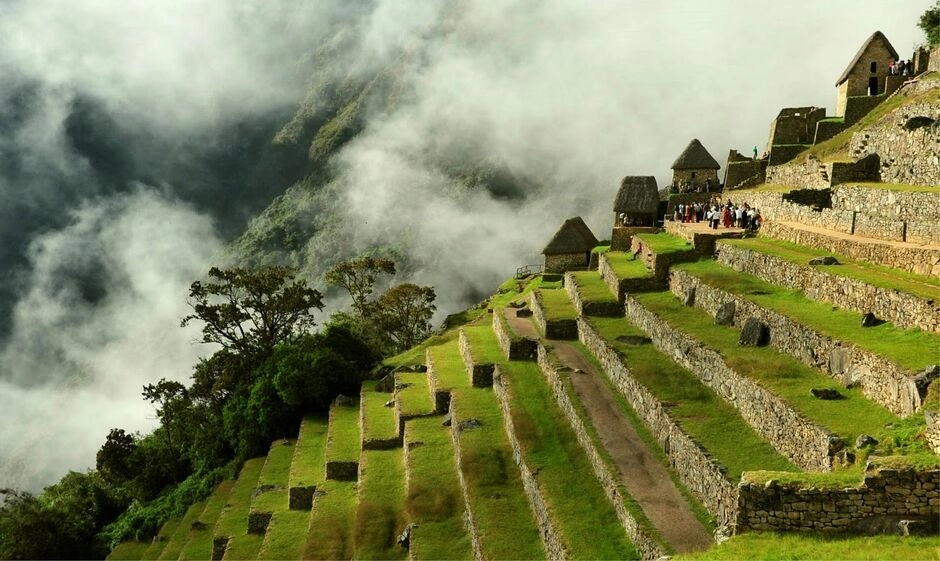
Ready to experience the wonders of Peru? Get in touch, and we’ll help you plan the adventure of a lifetime!

Ready to experience the wonders of Peru? Get in touch, and we’ll help you plan the adventure of a lifetime!

Email Consent Notice
By checking the box, you consent to PeruVisit.com collecting and processing your email address for the purpose of sending newsletters, promotional offers, and information about tours in Peru.
You acknowledge and understand that:
For full details on how we manage personal data, please refer to our Privacy Policy.
Machu Picchu – an ancient Inca city in Peru
New Seven Wonders of the World
Mountain Wayna Picchu (Huayna Picchu)
When to Visit Machu Picchu
How to Get to Machu Picchu / Tours and Hikes to Machu Picchu
Tours to Machu Picchu in 2025/2026
Rules for Visiting Machu Picchu
Machu Picchu (in the Quechua language, "Machu Pikchu" means "Old Mountain") is a mysterious Incan city built in the mid-15th century and is the main attraction that draws travelers to tours in Peru. It is located approximately 100 km from the Incan Empire's capital city of Cusco, high up in the mountains at an altitude of 2,450 meters above sea level. It is so secluded in the Andes that Spanish colonizers were unable to reach it. We learned about this city in 1911 thanks to the American scholar from Yale, Hiram Bingham. Although it's worth noting that local residents always knew about Machu Picchu, they were not eager to share this information with outsiders.

The history of the discovery of this city is very interesting: it turns out that Hiram Bingham was actually searching for a completely different city - the legendary Vilcabamba, where, according to Incan legends, many of their treasures and mummies of rulers were taken during the Spanish conquest of the country. Bingham wandered through the mountains hoping to find some trace of this city, and on his way, he met a boy carrying a ceramic jug. Being a scholarly expert, Bingham immediately realized that the jug was not ordinary, so he asked the boy where he found it. The local adults didn't trust the foreigner (gringo) and tried not to reveal their secrets, but the boy, in his simplicity, told Bingham about Machu Picchu and showed him the way.

In 2007, 100 million people voted to include Machu Picchu in the list of the New Seven Wonders of the World. Since 1983, Machu Picchu has been recognized as a UNESCO World Heritage Site.
Today, the construction of Machu Picchu appears incredible - the stones were transported from distant quarries by sliding them down wet clay slopes, dragging them along logs, and then polishing them so perfectly that even now it is impossible to fit a knife blade into the joints. Machu Picchu fits astonishingly well into the surrounding landscape, which is why it is often referred to as the "city in the heavens" or the "city among the clouds." The triangular roofs of its buildings seem to be a part of the scenery. It is an engineering and architectural masterpiece: to build such a city, the builders had to possess extensive knowledge of topography, geology, astronomy, and ecology. Natural slopes were used in the construction, and the building techniques ensured the stability of the structures even in the event of a 40-degree rock incline or an earthquake.

The true purpose of Machu Picchu remains unknown. According to documents from the 16th century, it was the residence of the Supreme Inca Pachacuti (1438-1470) and later served as a place where children from noble families in Cusco were sent for education. Boys were taught astronomy, while girls learned textile craftsmanship. Another theory suggests that the city had military and defensive significance. Firstly, it ensured control over the subject tribes of the Incas in the surrounding area, and secondly, it provided access to fertile tropical and subtropical regions where important crops such as fruits, pumpkins, coca, and various medicinal plants were grown.
The city existed for just over 100 years, until 1532, when Spanish colonizers invaded the territory of the Inca Empire. At this time, the inhabitants of Machu Picchu mysteriously disappeared. One theory suggests that this happened because Machu Picchu was dependent on the capital, Cusco, for food supplies, and when the Spanish conquerors arrived, the food shipments ceased, gradually leading to hunger and the abandonment of the city. Another theory suggests that 5,000 commoners went to fight against the Spanish, while 3,000 members of the nobility left for the legendary Vilcabamba, taking their treasures with them. However, the true reason for their disappearance may remain something else entirely.
In 2011, the 100th anniversary of the "grand discovery" of Machu Picchu by Yale professor Hiram Bingham was marked. After the city's discovery, Professor Bingham conducted research and took a large number of artifacts found there to Yale. Since then, Peru engaged in years of negotiations with the United States to have these artifacts returned to their homeland, and in 2010, an agreement was finally reached. In 2011, over 4,000 artifacts were returned to Peru and exhibited in a museum in the city of Cusco.

Wayna Picchu is the mountain you see in all the classic images of Machu Picchu, just behind the city. In the Quechua language, its name translates to "Young Mountain," whereas "Machu Picchu" means "Old Mountain."
On Wayna Picchu, there are many residential and temple structures. The path to the top is quite dangerous and suitable for people with good physical preparation. Many people wish to climb it, but only a limited number of individuals are allowed each day – a total of 400 people. To be among those lucky enough to ascend, one must purchase an entrance ticket to Machu Picchu in advance, which includes access to Wayna Picchu.

The weather allows for visiting Machu Picchu throughout the year. The dry season lasts from April to October, while the rainy season extends from November to March. It is possible to explore Machu Picchu during the rainy season, you just need to bring an umbrella and a raincoat, as the rain comes with intermittent breaks and sometimes the sun peeks through. Additionally, during this period, there are fewer tourists, allowing for a more peaceful walk among the ruins.
The temperature remains relatively stable throughout the year, with significant fluctuations between daytime and nighttime values: temperatures range from -1°C to +14°C at night and from +23°C to +27°C during the day.



All tours and excursions to Machu Picchu start in the city of Cusco. Flights from Lima, the capital of Peru, where the international airport is located, arrive in Cusco. To visit Machu Picchu, you will need to spend at least two to three days in Peru.
There are comfortable trains of various tourist classes that run from the town of Machu Picchu back to Cusco or Sacred Valley of the Inkas, ranging from simpler ones like Expedition and Vistadome operated by Peru Rail and The Voyager by Inca Rail, to more expensive luxury trains like Vistadome Observatory and Hiram Bingham by Peru Rail and The 360 and The First Class by Inca Rail.

There are three most famous and interesting treks, each leading to Machu Picchu:
The Inca Trail
This is the most renowned route, included in the top five best tourist routes in the world and is the most popular trek in Latin America.
The classic Inca Trail takes 4 days / 3 nights but requires a couple of days of acclimatization at high altitude before starting the hike. Along the ancient stone path built by the Incas, you will cover 43 kilometers and enter Machu Picchu through the famous Intipunku (Sun Gate) in the early morning of the 4th day of the trek.
Tourists camp overnight in tents for all three nights.
This trek must be booked in advance, preferably about six months before the trip, as the number of entry tickets to the Inca Trail is strictly limited and controlled by the Peruvian Ministry of Culture.
Advantages:

Short Inca Trail
This trek takes 2 days, during which you will cover a total of 16 kilometers (around 12 km on the first day). In this trek, tourists cover the last portion of the famous Inca Trail and enter Machu Picchu through the Sun Gate (Intipunku) in the evening of the first day. On this day, tourists only descend to the exit of Machu Picchu and spend the night in a hotel in the town of Machu Picchu. The full tour of the ruins awaits them the next day.
Advantages:
An alternative route to reach Machu Picchu. This trek takes 5 days and passes through high mountains, glaciers, and lagoons, descending into the region with a tropical climate where the ruins of Machu Picchu are located. In the evening of the 4th day, tourists arrive in the town of Machu Picchu and stay overnight in a hotel. On the morning of the 5th day, they visit Machu Picchu for the excursion.
Before starting the trek, it is recommended to spend at least two days in the mountains for acclimatization.
Advantages:
Take note: the number of tickets to Machu Picchu is limited. Choose your visiting time and book your tour in advance!

Contact us, and we will find the perfect tour option that suits you best.
Join our group tours to Machu Picchu with English-speaking guides or opt for personalized private tours on any date. We tailor the itinerary according to your preferences.
Currently, 4044 entrance tickets to Machu Picchu are available for sale daily. They are divided into time slots, with 190 people entering the archaeological complex every hour starting from 6 a.m. The last group of visitors enters Machu Picchu at 2 p.m. Visitors are allowed to stay in Machu Picchu for a maximum of 4 hours, and entry is permitted only once with the ticket.
When purchasing a ticket, it is necessary to choose one of the 4 routes. The chosen route will be indicated on the entrance ticket, and visitors must strictly follow it during their visit to Machu Picchu. Going off the designated route is not allowed, and the complex's staff closely monitor compliance. Visitors can only follow the route in one direction; backtracking is not permitted.
We endeavor to purchase tickets for our clients on route number 2 as it is the longest and most interesting route.
Map of the routes in Machu Picchu:

Route number 5 is reserved only for those tourists who are following the Inca Trail. As it is quite short, we recommend purchasing a second ticket for a different route to fully explore the ruins.
Almost all our tours include a visit to Machu Picchu, the main attraction of Peru. Contact us for more information about our programs and quotes.



Get in touch, and we’ll help you plan the adventure of a lifetime!